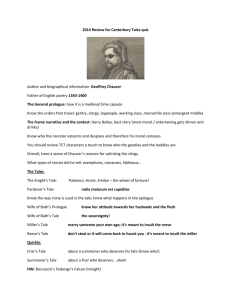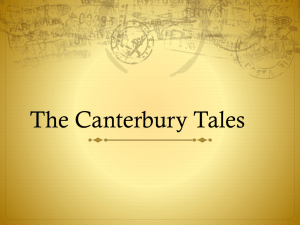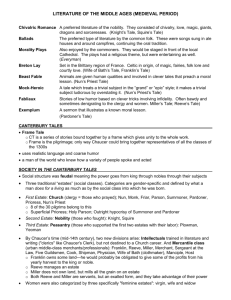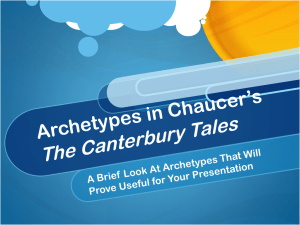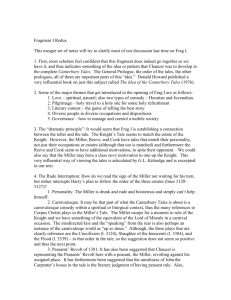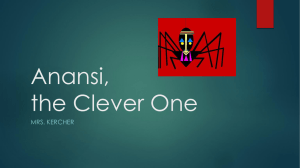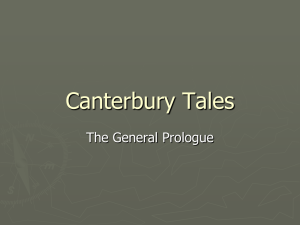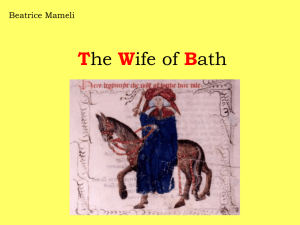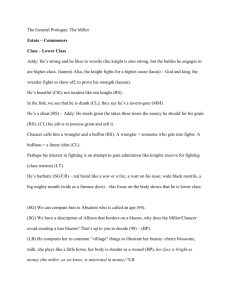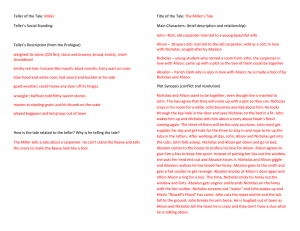Miller`s Tale Study Guide
advertisement
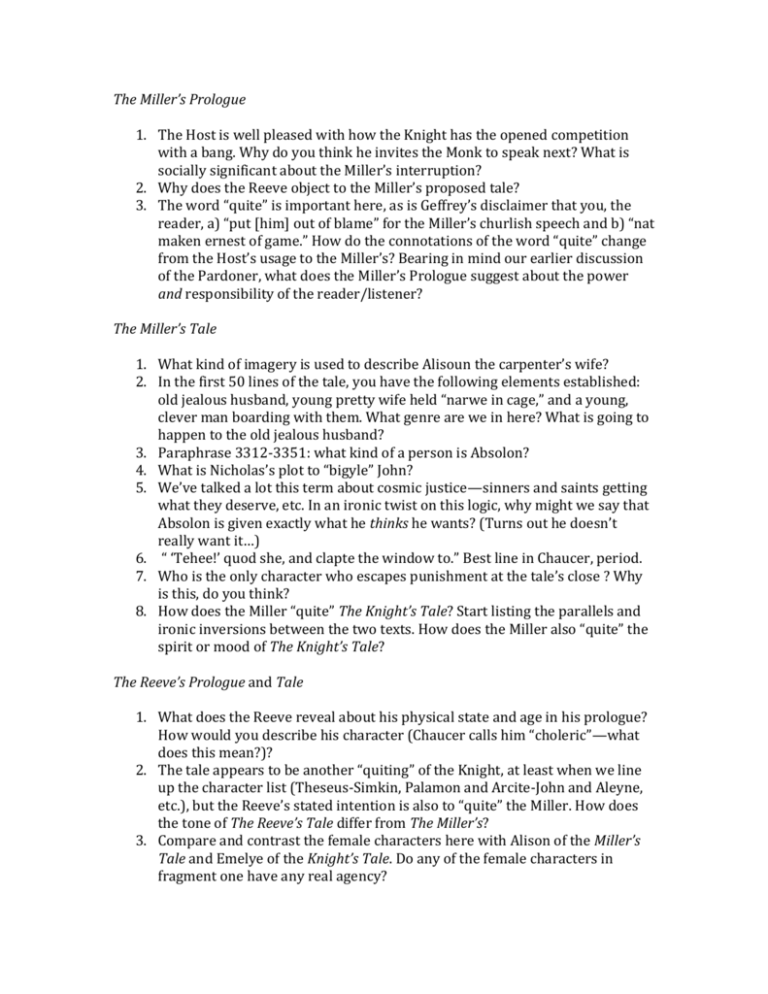
The Miller’s Prologue 1. The Host is well pleased with how the Knight has the opened competition with a bang. Why do you think he invites the Monk to speak next? What is socially significant about the Miller’s interruption? 2. Why does the Reeve object to the Miller’s proposed tale? 3. The word “quite” is important here, as is Geffrey’s disclaimer that you, the reader, a) “put [him] out of blame” for the Miller’s churlish speech and b) “nat maken ernest of game.” How do the connotations of the word “quite” change from the Host’s usage to the Miller’s? Bearing in mind our earlier discussion of the Pardoner, what does the Miller’s Prologue suggest about the power and responsibility of the reader/listener? The Miller’s Tale 1. What kind of imagery is used to describe Alisoun the carpenter’s wife? 2. In the first 50 lines of the tale, you have the following elements established: old jealous husband, young pretty wife held “narwe in cage,” and a young, clever man boarding with them. What genre are we in here? What is going to happen to the old jealous husband? 3. Paraphrase 3312-3351: what kind of a person is Absolon? 4. What is Nicholas’s plot to “bigyle” John? 5. We’ve talked a lot this term about cosmic justice—sinners and saints getting what they deserve, etc. In an ironic twist on this logic, why might we say that Absolon is given exactly what he thinks he wants? (Turns out he doesn’t really want it…) 6. “ ‘Tehee!’ quod she, and clapte the window to.” Best line in Chaucer, period. 7. Who is the only character who escapes punishment at the tale’s close ? Why is this, do you think? 8. How does the Miller “quite” The Knight’s Tale? Start listing the parallels and ironic inversions between the two texts. How does the Miller also “quite” the spirit or mood of The Knight’s Tale? The Reeve’s Prologue and Tale 1. What does the Reeve reveal about his physical state and age in his prologue? How would you describe his character (Chaucer calls him “choleric”—what does this mean?)? 2. The tale appears to be another “quiting” of the Knight, at least when we line up the character list (Theseus-Simkin, Palamon and Arcite-John and Aleyne, etc.), but the Reeve’s stated intention is also to “quite” the Miller. How does the tone of The Reeve’s Tale differ from The Miller’s? 3. Compare and contrast the female characters here with Alison of the Miller’s Tale and Emelye of the Knight’s Tale. Do any of the female characters in fragment one have any real agency?
